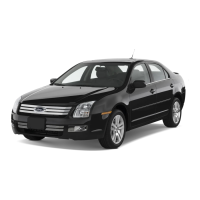
Do you have a question about the Ford Fusion 2008 and is the answer not in the manual?
| Brand | Ford |
|---|---|
| Model | Fusion 2008 |
| Category | Automobile |
| Language | English |
Alerts from warning lights and gauges to indicate vehicle conditions and potential repairs.
Explanation of the 'Service Engine Soon' indicator light's function and meaning.
Describes the brake system warning light function and what its illumination indicates.
Explains the ABS light and what to do if it stays illuminated or flashes.
Information on the airbag readiness light, its illumination, and when service is needed.
Illuminates when Traction Control is active and advises service if light remains on.
Warns of low tire pressure; light illuminates for 3 seconds at ignition ON.
Overview of the audio system and its basic functions for immediate use.
Instructions for basic operation of the audio system, including radio listening.
Details on manual climate control, including temperature and air flow selections.
Information on the automatic climate control system and its settings.
Controls for turning headlamps, parking lamps, and exterior lights on or off.
Detailed steps for replacing high beam and low beam bulbs.
Information on how to use the speed control system and its limitations.
Displays vehicle information and system warnings on the instrument cluster.
Information about Integrated Keyhead Transmitters (IKTs) and their functions.
Procedure for using the keyless entry keypad, including code entry.
Capabilities of the Integrated Keyhead Transmitter for remote entry.
Using the keyless entry keypad for locking/unlocking and opening the trunk.
Description of the engine immobilization system and its operation.
Overview of the Personal Safety System™ and its components.
How the system adapts deployment strategy based on crash severity and occupant conditions.
Explains how the system uses sensors to adapt airbag and seat belt deployment.
How to determine system condition via warning light or back-up tone.
Supplemental warning for unbuckled driver/passenger belts.
Procedure to deactivate or activate Belt-Minder features.
Information on the airbag system and important precautions.
Safety guidelines for children regarding airbags.
Explains how pretensioners and airbags activate based on deceleration.
What to do if an airbag has deployed and the need for immediate replacement.
System designed to disable front passenger airbag based on occupant conditions.
Explains the design and function of the side airbag system.
Explains the design and function of the side air curtain system.
How to determine SRS operational status via readiness light or tone.
Directions on properly using safety restraints for children.
Legal requirements and general precautions for child restraints.
Guidelines for restraining children in safety seats and with safety belts.
Guidelines for selecting and installing child safety seats.
How to select and install child safety seats properly.
Instructions for installing child seats using vehicle lap and shoulder belts.
How to attach child safety seats using tether straps and anchors.
How to attach child seats using LATCH anchor points.
Information on tire quality grading, terminology, and maintenance.
Explanation of Tire Quality Grades: Treadwear, Traction, and Temperature.
Guidelines on using correct size, load index, and speed rating tires.
Explanation of the TPMS, low tire pressure telltale, and malfunction indicator.
How the TPMS measures pressure and warns of low tire pressure.
Procedure to calculate available cargo and luggage load capacity.
General information on starting and operating the vehicle.
Safety advice for vehicle operation, including idling and exhaust fumes.
Information on normal brake noise and potential issues.
Description of the ABS system, its operation, and normal noises.
Explanation of the ABS warning lamp and when service is needed.
How the Traction Control system helps maintain stability and steerability.
Information on automatic transmission operation.
Instructions for operating the manual transmission, including clutch use.
How the Reverse Sensing System warns of obstacles near the rear bumper.
Information on the AWD system, its operation, and limitations.
Precautions and procedures for driving through water.
Information and services available for roadside assistance.
Overview of the complimentary roadside assistance program.
Details on what the roadside assistance program covers.
Information on fuses, their ratings, colors, and locations.
Location and function of the power distribution box in the engine compartment.
Procedure for changing a flat tire safely.
Procedure for changing a tire, including blocking wheels and removing lug nuts.
Safety precautions and preparation for jump starting a vehicle.
Step-by-step instructions for connecting jumper cables correctly.
Procedure for starting the engine of a disabled vehicle using jumper cables.
Advice on contacting towing services and proper towing procedures.
Information on getting services needed, both at home and away.
Guidance on obtaining warranty repairs and dealership services.
General advice for washing and cleaning the vehicle's exterior and interior.
Instructions for washing the vehicle using approved methods and products.
Information on service recommendations and vehicle maintenance.
Guidance on tracking routine service and using authorized dealers.
Safety precautions to follow when working on or servicing the vehicle.
Diagram and list of key components in the engine compartment.
Information on checking and adding engine oil.
Procedure for checking the engine oil level on a level surface.
Steps for adding engine oil to the engine safely.
Recommendations for engine oil type and specifications like SAE 5W-20.
Information about the maintenance-free battery and its care.
How to check engine coolant concentration and level.
Checking coolant concentration and level at specified intervals.
Explanation of the fail-safe cooling system when the engine overheats.
Important safety precautions for handling automotive fuels.
Guidelines for safe refueling to avoid fire and injuries.
Recommendations for fuel types, octane ratings, and ethanol blends.
Information on measuring and improving fuel economy.
Step-by-step calculations for determining fuel economy.
Habits and maintenance tips to improve fuel economy.
Components and standards for the emission control system.
Explanation of the OBD-II system for monitoring emission controls.
How to determine if the vehicle is ready for I/M testing.
Checking automatic transmission fluid levels.
Procedure for checking transmission fluid at normal operating temperature.
How to add fluid and the risks of using non-approved fluids.
Procedure for checking and adding manual transmission fluid.
Step-by-step instructions for changing the air filter.
Specifications and capacities for various maintenance products.
Technical data for the 2.3L I4 and 3.0L DOHC V6 Duratec engines.
Information on genuine Ford accessories available for the vehicle.
Details on the quality, warranty, and availability of Ford accessories.
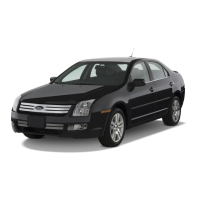
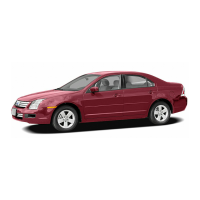
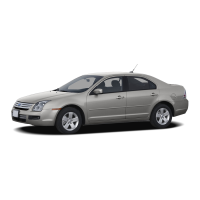
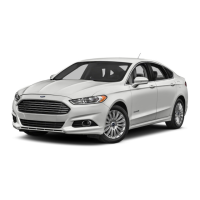

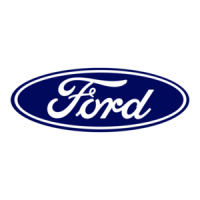
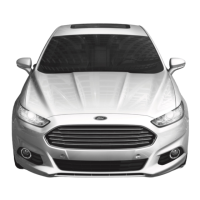

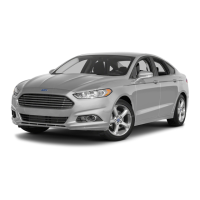
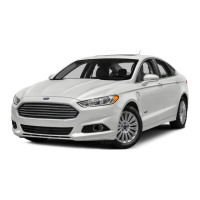

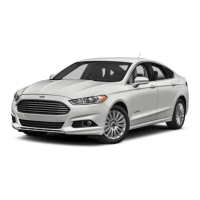
